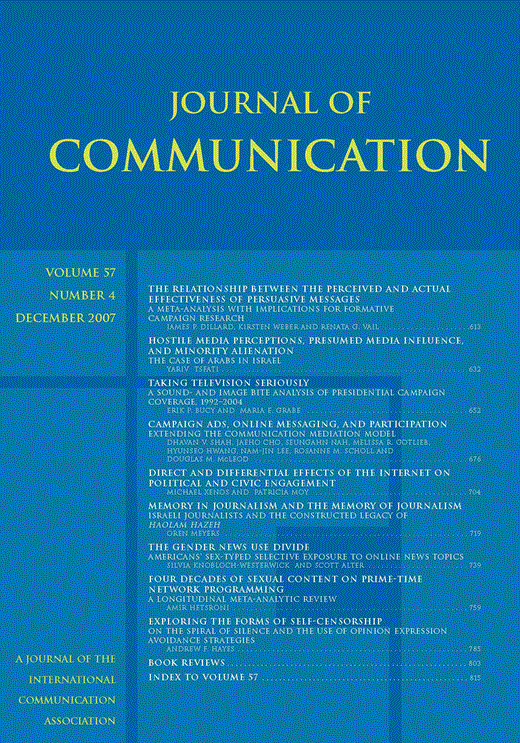-
Views
-
Cite
Cite
Maxwell McCombes, Esteban Lopez-Escobar, Juan Pablo Llamas, Setting the Agenda of Attributes in the 1996 Spanish General Election, Journal of Communication, Volume 50, Issue 2, June 2000, Pages 77–92, https://doi.org/10.1111/j.1460-2466.2000.tb02842.x
Close - Share Icon Share
Abstract
We advance the central proposition of agenda-setting theory—that elements prominent in the mass media's picture of the world influence the salience of those elements in the audience's picture—through the explication of a second level of agenda setting: attribute agenda setting. This preliminary research on candidate images during the 1996 Spanish general election simultaneously examined 2 attribute dimensions—substantive and affective descriptions—to test the hypothesis that media attribute agendas influence the voters' attribute agenda. Empirically, a high degree of correspondence was found between the attribute agendas of 7 different mass media and the voters' attribute agenda for each of the 3 candidates. The median correlation from these 21 tests of the hypothesis is +.72. Sixth-order partial correlations in which the influence of the other 6 mass media are removed from the correlation between a medium's agenda and the voters' agenda for a particular candidate have a median value of +.73. Additional analyses of the attribute agendas of each medium's primary audience in comparison with its principal competitor also yielded evidence of second-level agenda setting. Future research should pursue complex longitudinal designs tracing the impact of media content on voters' images at both the aggregate and individual levels as part of the continuing scholarly dialogue on competing approaches to framing research and attribute agenda setting.





